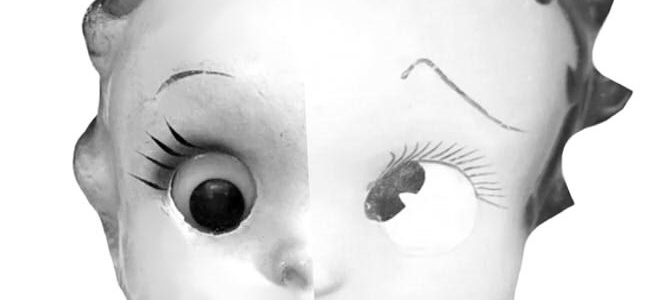
Betty Boop Dolls vs. Kiki Dolls:
Much like that Helen Kane lawsuit Kane v. Fleischer et al., 248 A.D. 554, there was another three-way lawsuit with Ralph A. Freundlich, Inc., the Fleischer Studios and Joseph Kallus of The Cameo Doll Company. However this time the lawsuit was filed by the Fleischers and Kallus.

Helen Kane Did Not Sue Over Dolls:
Uninformed individuals believe that “Helen Kane” sued over dolls in this case. However, it was unrelated to Helen Kane. Although Kane did once have her own doll brand, but it was not successful enough to file a lawsuit. And after losing her own lawsuit, what kind of chance could she have had? When she was “unable to prove” in a court of law that she was the model for Betty Boop? Kane was allegedly the inspiration for Betty Boop, according to the maker of the “Kiki” dolls. However, he was also refuted in court.
Ralph A. Freundlich worked for the Jeanette Doll Company from 1923 until 1929. In addition, he established the Silver Doll & Toy Manufacturing Company, which from 1923 to 1924 made Mama dolls.
Ralph Freundlich and his brother Sol J. Freundlich released the “Kiki” dolls in August of 1931.

The Betty Boop dolls were announced and given an early release on November 14, 1931. Several children actually won them as prizes. And it was announced in the newspapers that the dolls would debut officially in the stores soon.
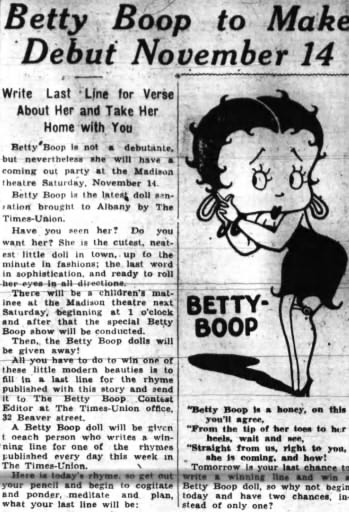
The issue with this, though, is that Betty Boop was a dog girl back then. Furthermore, she hadn’t been formally promoted as a human girl. She was a dog before she made an appearance as a girl one or two times.
Betty had appearances in two human animated films: Mask-A-Raid, which was released on November 7, 1931, and Kitty From Kansas City, which was released on October 31, 1931.
Also if Betty is a human in Dizzy Red Riding Hood, that was released on the December 12, 1931. That cartoon is often debated, because Betty’s ears are hidden by a hood. Though in one scene her nose does transform from a button into a snout.
But officially audiences didn’t know Betty as a human girl until her debut in Stopping the Show released in 1932. The Cameo Company and the Fleischer Studios probably saw Freundlich as tough competition.

And what do people often do with tough competition?
You eliminate them. But only if you have no morals of course.
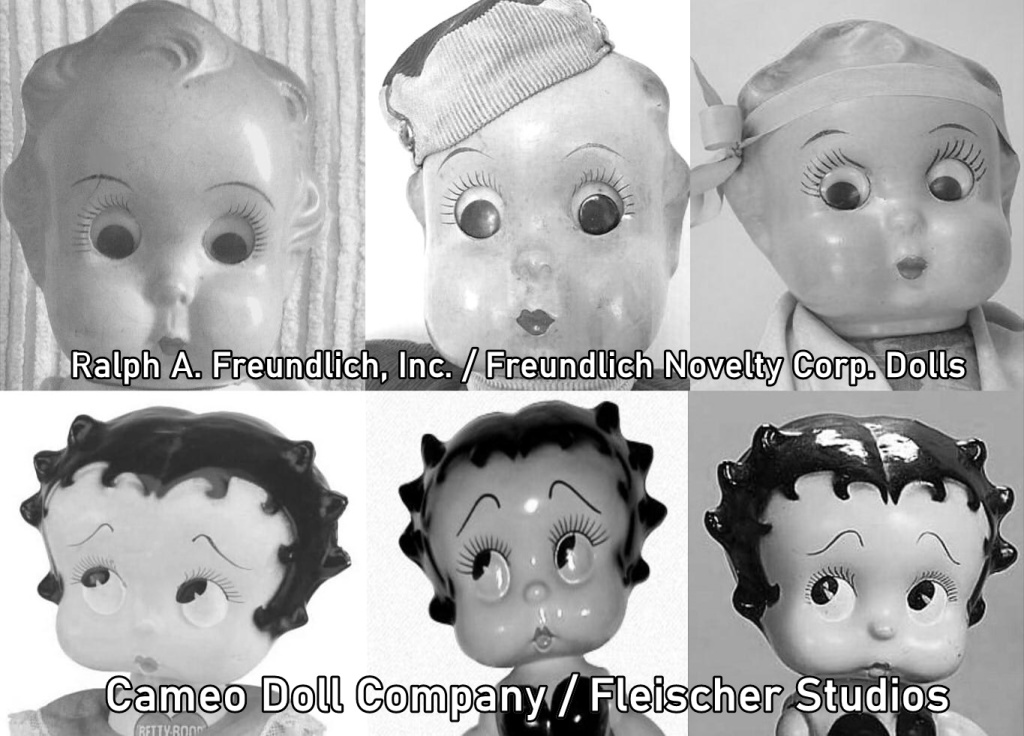
It is hard to identify Freundlich’s “Kiki” dolls as he never marked them. However, they might be similar to the “Goo-Goo” dolls that the business kept producing. Freundlich made so many dolls, including African-American versions, male and female dolls. Sailor boys, you name it, and they all had that cute kewpie-doll look.
The Cameo Company dressed Betty up for some of the dolls, making her look like a little girl. I can understand why they filed this lawsuit. Since the dolls were obviously intended for girls, Betty had to be altered in order for people to purchase the dolls, after all, business is business.

The name “Kiki” was given to the dolls in homage to Mary Pickford’s 1931 release of Kiki, the most well-known movie at the time. Pickford likened to Shirley Temple and was known as America’s sweetheart, but it seems by 1931 Pickford had taken on a more mature or sophisticated persona.
Naturally, as has been stated numerous times, Walt Disney drew inspiration for his Snow White character from both Betty Boop and Mary Pickford. So it is only natural that Pickford would have a sort of “Betty Boop” appeal. Nonetheless, I believe Pickford was more innocent than Betty.
To stop Freundlich’s company from making dolls that they claimed allegedly mimicked Max Fleischer’s animated character Betty Boop. The Fleischer Studios, Inc., Fleischer Art Service, Inc., and the Cameo Doll Company filed a copyright lawsuit against Freundlich’s company in 1932.
Freundlich contended throughout the legal dispute that Helen Kane was the “originator” of the character, thereby negating the validity of the “Fleischer copyright”.
But around the same time, Kane was also suing the Fleischers in a $250,000 infringement battle. Kane later lost this lawsuit because she was unable to establish that she was the creator of the “Boop-Boop-a-Doop” singing style, model, or the concept for Betty Boop.
Judge Woolsey said in his verdict:
“The character which was depicted combined in appearance the childish with the sophisticated, a round baby face with big eyes and a nose like a button framed in a somewhat careful coiffure with a body of which perhaps the most notable characteristics is most self-confident little bust imaginable.”
And so brothers Ralph A. and Sol J. Freundlich lost the infringement lawsuit brought by the Fleischer Studios in 1934.
The Circuit Court of Appeals sustained the New York State Supreme Court’s decision that the Fleischer Studios, Fleischer Art Service, and Joseph I. Kallus had infringed upon Betty Boop’s copyright. Freundlich was mandated to pay “$15,000” in expenses and “$5,440” in damages as part of the lawsuit.
Even though the dolls by Freundlich were stopped by injunction they apparently were still being sold at stores. I assume he changed the name from “Kiki” to “Googly” or “Goo-Goo”.
I think the “Kiki” dolls allegedly got reproduced into a new line called Topsy and Eva!? They are characters from Uncle Tom’s Cabin. The “Kiki” dolls have a very similar design or concept. Big eyes, curly hair, rosebud lips and a baby face shape.
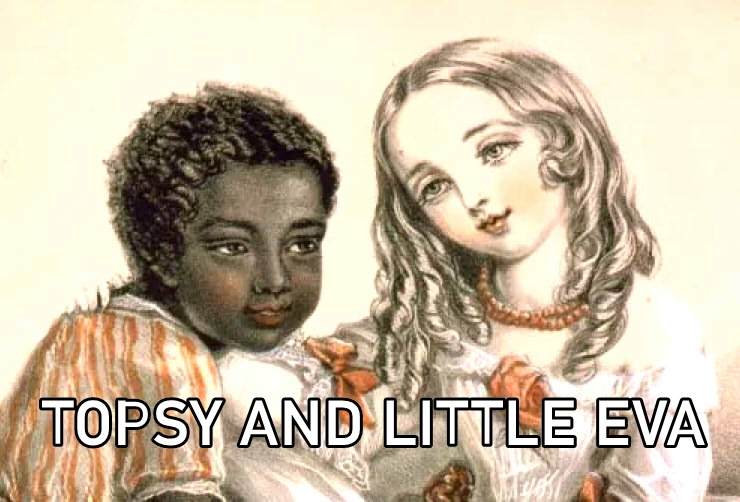
Topsy and Eva are older, they are not babies.
Tospy and Eva were still important in the 1920s and 1930s and were very well-liked fictional characters in the 1800s and 1900s. The Duncan Sisters, who wore a “baby-doll” style of clothing and sang in the “baby-talk” singing style long before vocalist Helen Kane, are well-known for portraying them.
Tospy and Eva are indirectly connected to the Betty Boop story, when it comes to the origination of the baby-doll style. Merely because of the Duncan Sisters and how they portrayed these characters way back in 1923. They starred in a silent film adaption in 1927. In the musical adaptions of this franchise the Duncan Sisters sing in baby voices, similar to Betty Boop, and they scat-sing too.
In 1937, Ralph Freundlich was convicted of perjury. He insisted that he had only made 676 dolls, but it was later found that he had actually built 1,108.
In 1938, he was sentenced to three months in prison and a $4,000 fine.

By 1932 the “Betty Boop Cameo Dolls” were sold everywhere and were extremely popular. Cameo sold many varieties of dolls from wooden to porcelain.
Story:
“Hello, my little friend. I am so happy to meet you. I’ve always wanted to come to your house and show you Happiness! Everybody likes me, so that’s why I’m a movie star. And, of course, I like everybody, especially you and all your little friends.”

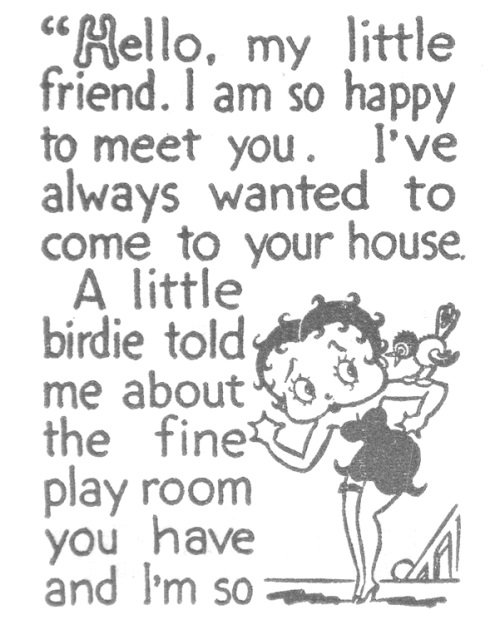
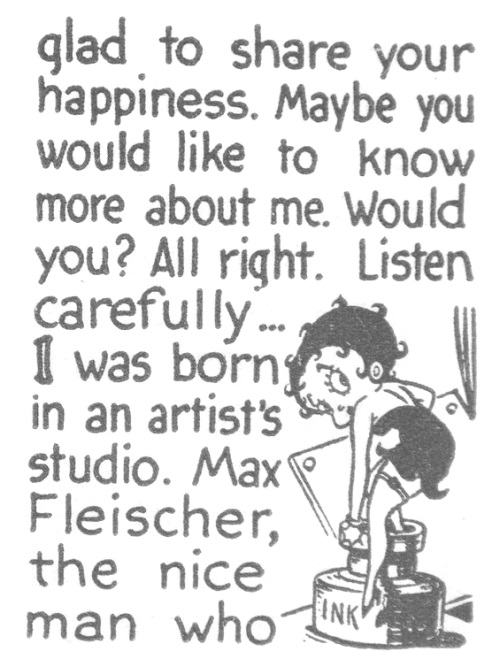
The alternative dialogue was, “Hello, my little friend. I am so happy to meet you. I’ve always wanted to come to your house. A little birdie told me about the fine play room you have and I’m so glad to share your happiness. Maybe you would like to know more about me.”
“Would you? All right. Listen carefully… I was born in an artist’s studio. Max Fleischer, the nice man who draws the funny pictures of Bimbo and his animal friends, found me. He taught me to dance – sing. To swim and to play tennis. How to play the piano and to cook too.”


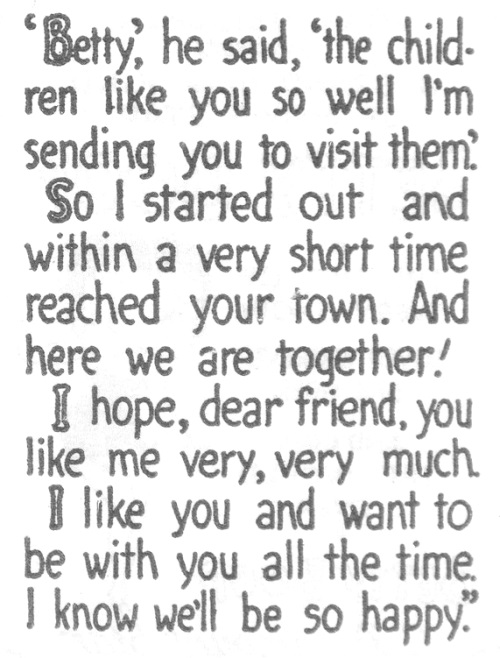
“Everything a good little girl should do. Then he put me in the movies as leading lady with Bimbo. Everybody liked me as soon as they saw me. That’s why I’m a movie star. And I liked them too; ~ especially you and all your little friends.”

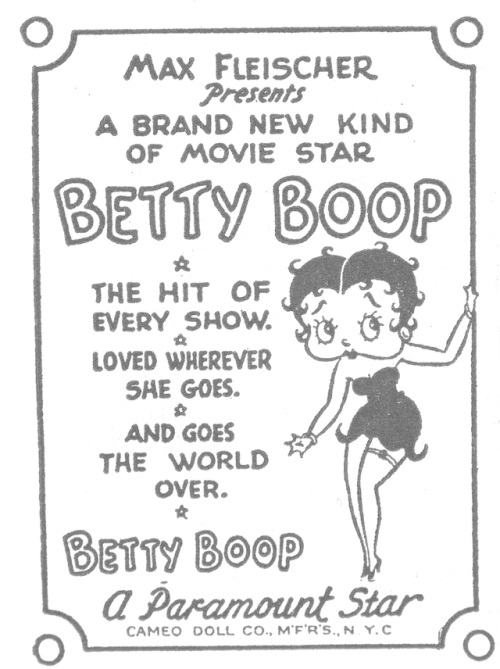
“Not so long ago I met the man who owns Doll Land. He called me in his office the other day. ‘Betty’ he said, ‘the children like you so well I’m sending you to visit them.’ So I started out and within a very short time reached your town. And here we are together! I hope, dear friend, you like me very, very much. I like you and want to be with you all the time. I know we’ll be happy.”
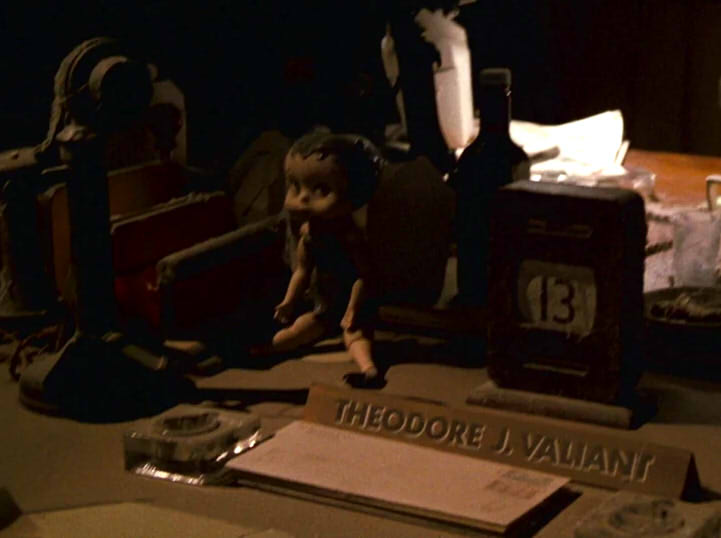
Eddie Valiant in Who Framed Roger Rabbit has a passing affection for Betty Boop.
The reason for this is that his late brother Theodore J. Valiant was somewhat of a fan.
Betty Boop makes an appearance in the film as voiced by Mae Questel, and there’s also a “Betty Boop Cameo Doll” on Theodore’s desk that makes a small “cameo” appearance.
From the Danbury Mint Collection, this popular 1930s Betty Boop doll was recreated in porcelain in 2005.
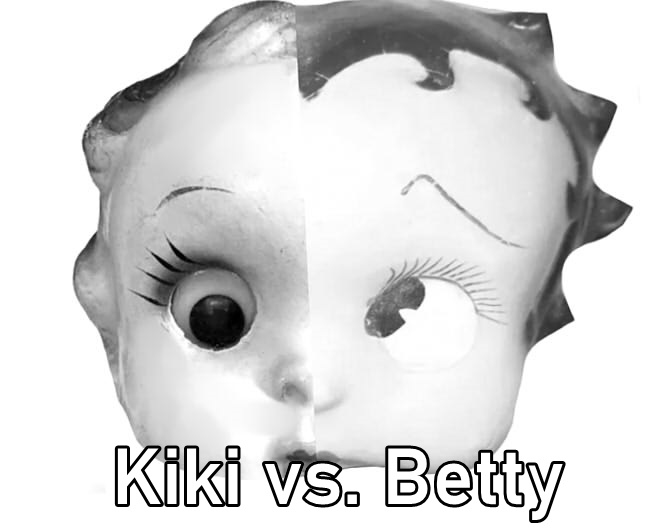
R.I.P. Kiki:
In my opinion, Freundlich did not violate any copyright. That the Fleischers had to go to such lengths to ruin someone is regrettable. But for such things, there’s always karma.
(In loving memory of Kiki. 1931 – 1936.)
